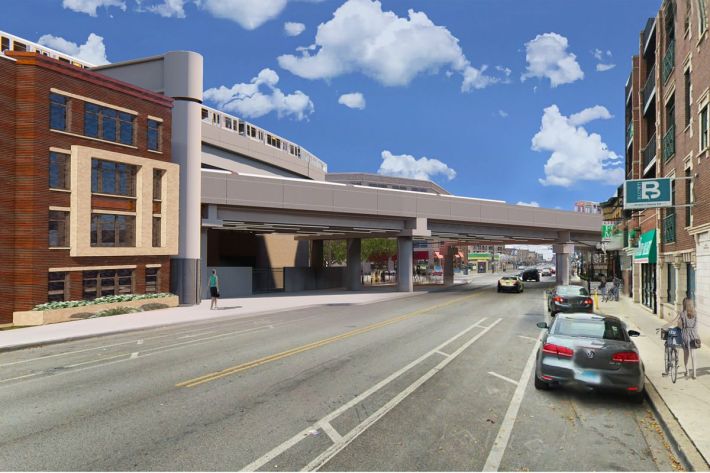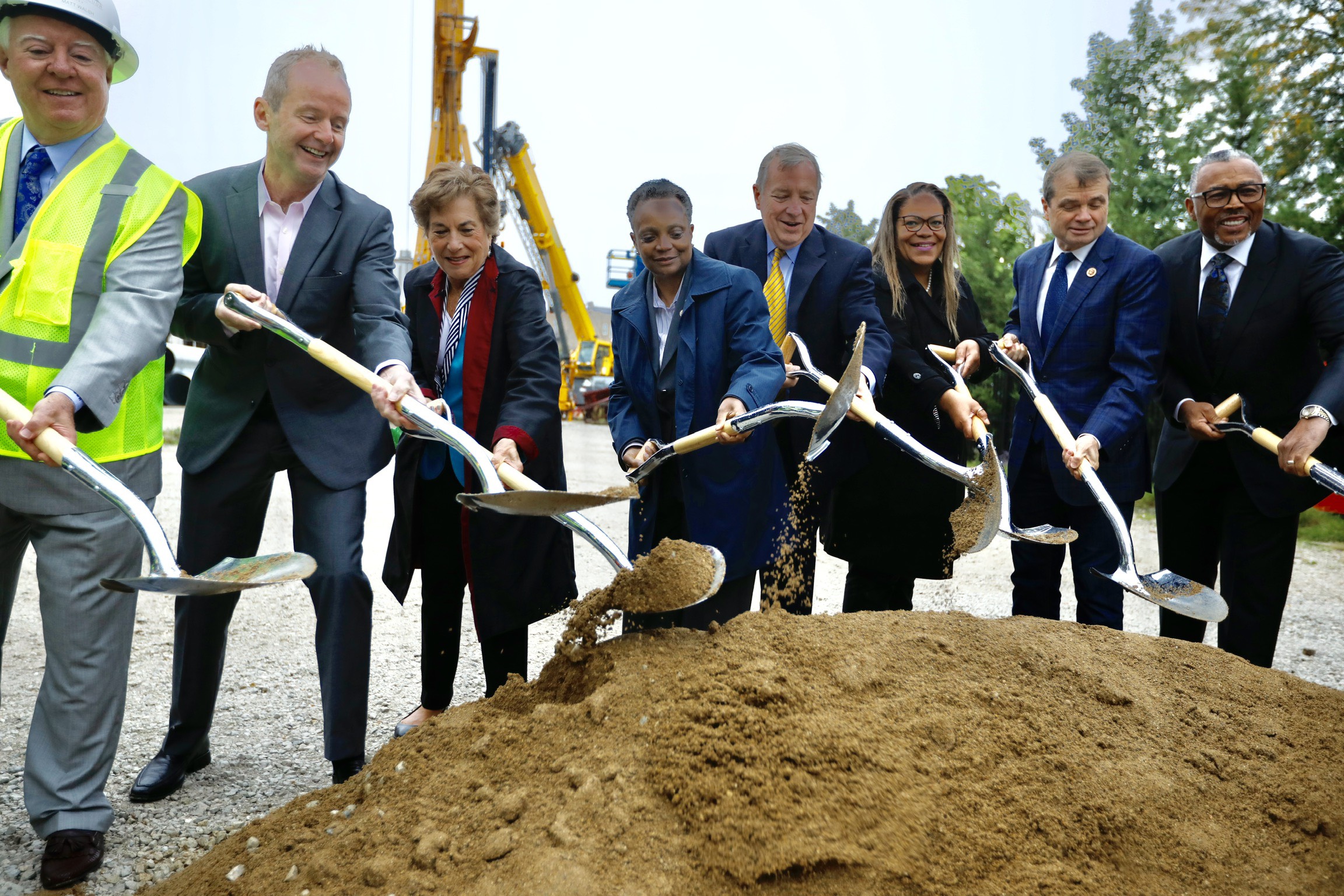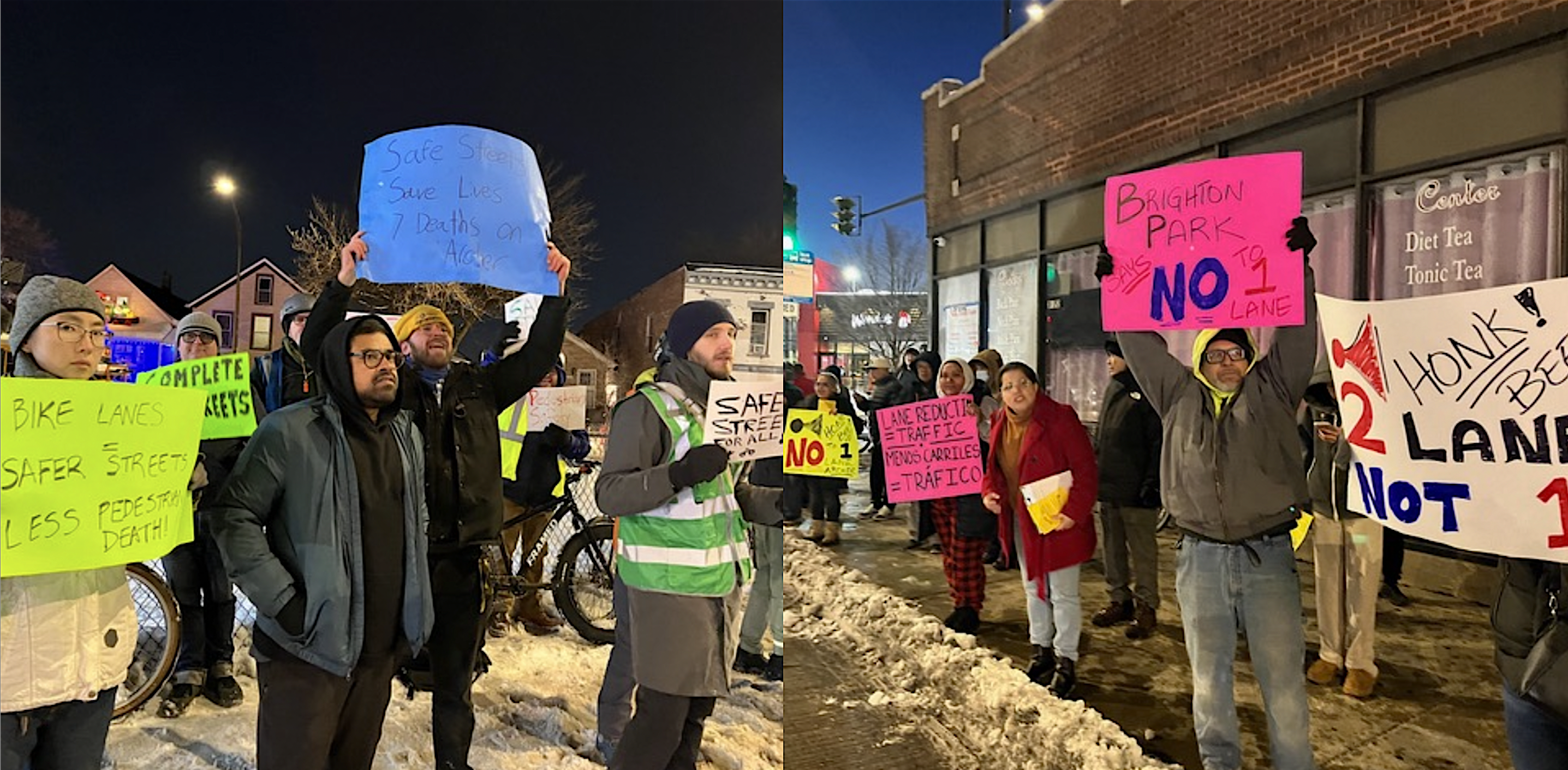Last month I got a behind-the-scene briefing on plans for the $2.1 billion first phase of the CTA's Red and Purple Modernization project, the biggest Chicago transit infrastructure rehab project ever. This morning Mayor Lori Lightfoot and other local officials kicked off the project, which includes the Belmont flyover overpass, four station reconstructions, and extensive track and signal work, with a groundbreaking in Lakeview.
“Today is a historic day for Chicago transit as we begin the largest project in CTA history to modernize CTA rail service for the next century and rebuild the Red Line, the CTA’s busiest line,” Lightfoot said in a statement. "Public transit is the great connector of our city — and with this monumental project, we are building on our obligation to ensure Chicago’s transportation network is accessible, reliable and affordable for all residents of this city so that our neighborhoods and communities are connected to jobs, education and opportunity."
“CTA customers will see a significant improvement in service with increased accessibility to rail service, less crowding on trains and rail platforms and shorter commute times,” said CTA President Dorval Carter in a statement. “The benefits of this project extend beyond riders of the Red Line to Chicago’s neighborhoods and small businesses across the city through training, job and contract opportunities that will be a model for future CTA projects like the Red Line Extension.”

Today's ground breaking marked the start of construction work on the Belmont flyover (officially called the Red-Purple Bypass), a strategy to eliminate a bottleneck just north of the Belmont station where Red and Purple train operators currently have to wait for northbound Brown Line tracks to cross the tracks at the same grade. Instead, those Brown Line trains will use the rollercoaster-like structure to go over the other tracks, which is slated for completion by the end of 2021. This fall, the RPM contractor, Walsh-Fluor Design-Build Team, will begin building new track structure foundations in the Lakeview for the bypass. The project was highly controversial because it included the demolition of about 16 buildings.
In addition to the flyover, Phase I of RPM includes
- The reconstruction of Red and Purple line track structure between Belmont and Newport/Cornelia (expected completion by the end of 2024).
- Reconstruction of the Lawrence, Argyle, Berwyn and Bryn Mawr Red Line stations into larger, wheelchair-accessible stations and replacement of track structure totaling six track-miles that is nearly a century old. Major track and station reconstruction will begin in late 2020-early 2021 and are expected to be substantially completed by the end of 2024.
- Installation of a new signal system on 23 track miles between Howard and Belmont that the city says will improve train flow and service reliability.
The city says RPM has already created 1,400 jobs and is expected to create hundreds of construction jobs each year. According to the CTA, the Red Line provides more than 200,000 rides on average each weekday, and more than 70 million rides a year.
While train service will generally be maintained during the RPM project, with some off-peak service cuts, arguably the biggest disruption will be the closure of the Lawrence and Berwyn stations for more than three years, starting as early as 2020. The CTA has promised to help draw customers to local businesses with an “Open for Business” PR campaign.







